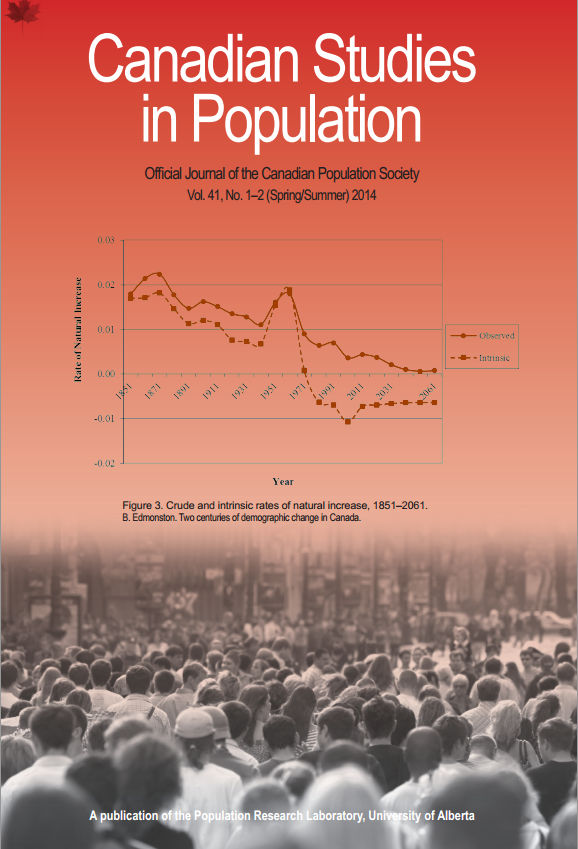Childlessness of men in Canada: Result of a waiting game in a changing family context
DOI:
https://doi.org/10.25336/P6J02QKeywords:
men’s fertility, childlessness, fertility intention, fatherhoodAbstract
Childlessness was about 12–13 per cent for cohorts born in 1927 to 1941, but increased in younger cohorts, with the childlessness of men born in 1957–1961 reaching 20 per cent. Using data from the 2006 Canadian General Social Survey on families, we show that the intention to be childfree among young men has largely remained low, at 8 to 10 per cent. As men grow older, the intention to be childfree increases such that at age 45–49, 16 per cent intend not to become fathers. Rather than a deliberate choice, the increase in childlessness could be the result of a waiting game. Longer stays in school, later entry into the work force, and starting marital relations at older ages contribute to delays in becoming fathers. While for many men the delay does not necessarily end in childlessness, for others the period of waiting changes their intention to become fathers. The adjustment of intentions and the eventual childlessness are made easier because of the reduced normative pressure to have children.
Downloads
Published
Issue
Section
License
Copyright (c) 2019 Zenaida R. Ravanera, Roderic Beaujot

This work is licensed under a Creative Commons Attribution 4.0 International License.
The following copyright statement applies to content published in Volumes 1 - 45 of Canadian Studies in Population.
Authors retain copyright and grant the journal right of first publication with the work simultaneously licensed under a Creative Commons Attribution License that allows others to share the work with an acknowledgement of the work's authorship and initial publication in this journal.
Authors are able to enter into separate, additional contractual arrangements for the non-exclusive distribution of the journal's published version of the work (e.g., post it to an institutional repository or publish it in a book), with an acknowledgement of its initial publication in this journal.
Authors are permitted and encouraged to post their work online (e.g., in institutional repositories or on their website) prior to and during the submission process, as it can lead to productive exchanges, as well as earlier and greater citation of published work (See The Effect of Open Access).



